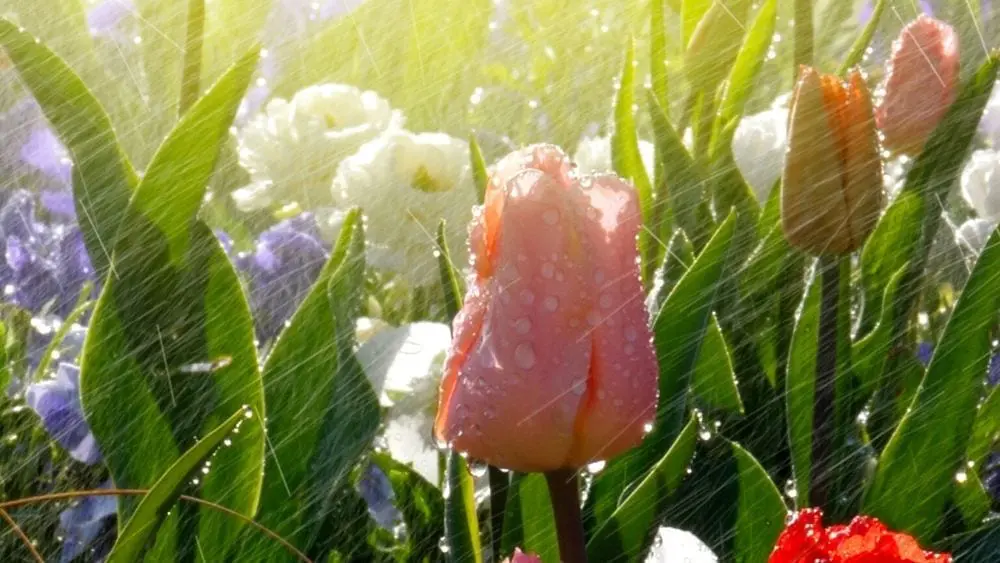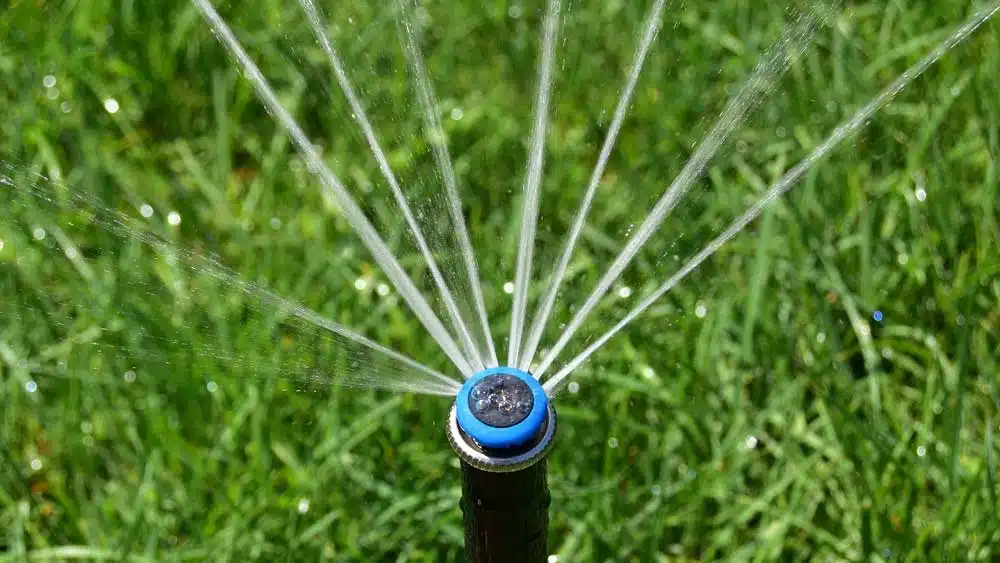
When you’re building a new home, one important landscaping question you may face is whether to install a permanent irrigation/sprinkler system in your yard. While certainly a convenient and potentially cost-saving option for caring for your lawn, having an irrigation system professionally installed can come with steep upfront costs, and it’s best done before any landscaping is completed as the soil will need to be dug out and replaced for installation to occur.
In short, there is quite a bit to consider when it comes to adding a residential irrigation system to your yard. Here’s a few factors you should think about when it comes to sprinkler installation.
The Cost of Installing a Sprinkler System
How much does it cost to have a residential irrigation system professionally installed? It should come as no surprise this is the No. 1 question new homeowners ask when debating whether to add a sprinkler system to their new home plans.
Obviously, the larger the lot the greater the overall cost will be as additional materials and labor will be required, but other factors come into play as well:
- The slope of the yard
- Type of landscaping
- Number of sprinkler zones required
- Type of soil to be excavated
- Type and brand of components selected
- Any local permits required
A general cost estimate for a level quarter-acre lot can run anywhere from $2,000 to $4,000, depending on the factors previously detailed, so plan on allocating around $3,000 when budgeting for the average irrigation system.
The Benefits of a Sprinkler System
Installing a sprinkler system in your home can provide numerous advantages and benefits that go beyond the convenience of watering your lawn. Not only will it save you time and effort, but it can help you automate and maintain a healthy, vibrant landscape.
Let’s take a closer look at some of the benefits an irrigation system can provide to you.
Convenience
For many, the sheer convenience and ease of use of an irrigation system is sufficient reason to purchase one, as not everyone enjoys the challenge of manually watering their lawn several times a week.
Having the ability to automate watering schedules and frequency allows homeowners to stop worrying about finding the time to water their lawns and gardens. An automated irrigation system also allows homeowners to spend time away from their home without concerning themselves with how or who will water their lawns.
Consistent Lawn Hydration
Another major benefit is the ability to water during optimal times of the day and deliver the exact amount of moisture needed for the types of grass and plants being irrigated.
Common consensus within the lawn care community is the optimal time to water a lawn is during early morning hours before full sunlight occurs. Watering before full sunlight helps to prevent excessive water evaporation from occurring allowing more time for lawns and gardens to properly absorb needed moisture. Watering after sunset introduces the potential for diseases and fungus to develop, as the lawn remains moist overnight.
Utilizing rain and moisture sensors, an irrigation system also can deliver the right amount of water needed for each zone of your lawn and garden, helping to remove all guess work from the equation. Since overwatering can frequently be as detrimental to certain types of plants and grasses as lack of water, having the ability to automate and control this vital component is definitely one benefit that should not be overlooked.
Long-Term Cost Savings
An often overlooked benefit to irrigation systems is potential monthly utility savings with reduced water usage. With the optimal time to irrigate a yard occurring during early morning hours an automated irrigation system can ensure this occurs as much or as little as needed once programmed by the owner. By consistently avoiding irrigation times later in the day the water required for proper irrigation will be less in volume versus watering later in the day when a larger percentage of moisture will be lost to natural evaporation.
Since irrigation systems allow for a variety of sprinkler heads and hoses to be utilized within specified zones, an owner is better equipped to match up the exact amount of water needed by plant types versus relying on a “once size fits all” yard sprinkler. A good example of this is the use of a soaker hose system within a garden bed where the volume of water needed for proper irrigation may be far less than what a typical full size sprinkler head is delivering to the main yard.
This in turn not only properly irrigates the garden but does so with reduced water usage thanks to the efficient targeting and lower output of the soaker hose. A properly automated and timed irrigation system, coupled with well-matched sprinkler heads and hoses by plant zones, can be a great way to help homeowners reduce overall water usage and utility costs.
Enhanced Resale Value
Enhanced resale value is another important benefit irrigation systems can offer as they are considered an upgrade feature by most homeowners. In addition, a properly designed irrigation system will help ensure a healthier and more attractive lawn and garden appearance, which is crucial to perceived “curb appeal” when potential buyers view your home.

The Downsides of an Irrigation System
While it’s obvious that there are many benefits to having a sprinkler system, there are some downsides that you should be aware of. Let’s take a closer look at some of the cons so you can decide if it’s worth the effort to install a sprinkler system in your yard.
Possible Irrigation System Deterrents
In addition to sizeable upfront installation costs, another major factor to consider is ongoing maintenance and repairs — and those associated costs. Irrigation systems include a fair amount of moving parts that require periodic adjustment and replacement over time.
Sprinkler heads can shift out of alignment and may require manual readjustment to ensure proper coverage of the zones they were designed to water. They may also become damaged during routine yard maintenance, such as mowing, and require complete replacement.
You should also be aware of potential underground damage to water pipes and the need to winterize the system during colder months. Pests and intrusive tree roots have been known to damage underground sections of irrigation systems resulting in costly repairs and damage to the lawn since portions will need to be dug out to access and repair cracked pipes.
Irrigation systems installed in colder areas of the country that experience hard freezes will require winterizing to avoid permanent damage since residual water is stored within the underground delivery pipes. Depending on the system installed, winterizing may require more than minimal effort from a homeowner to ensure their system is properly prepared for a potential freeze, so if you’re seeking a maintenance-free experience, you should keep this factor in mind.
Planning and Installation
If you’re a new homeowner interested in having an irrigation system installed, the best time to do so is before your lawn and garden areas are fully planted, so be sure to work with your builder to avoid having to replant your lawn and garden areas after installation. If you already built a new home, but now want to add an irrigation system, here is a brief overview of the process:
Creating Coverage Zones
A professional installation team typically begins by visiting your home and creating a diagram of the exterior areas to be covered by the irrigation system. Once exterior coverage areas have been established, they will then be divided into watering zones. Each zone’s watering requirements will determine how many and what kind of sprinkler heads will be installed.
Lawn zones typically include standard sprinkler heads that disperse water in a circular pattern, while garden areas may require directional heads or even softer impact bubbler hoses to help protect more delicate plants. Once completed, your zone coverage map should display exactly how each section of your lawn and garden will be irrigated and allow you to see any coverage areas that may have been missed and need to be addressed.
Breaking Ground
Once the zones have been mapped out and all required local permits obtained, your installation team will begin excavating your lawn into trenches to bury the needed water delivery pipes 1 to 2 feet underneath the surface. Throughout the various sections of underground piping, valve boxes will be added to control water flow to the sprinkler heads within specific sections. This helps to create the individual watering zones.
Once all piping has been buried and all valves and sprinkler heads attached, they will be fed to a main water supply pipe connected to your home’s nearest primary water source. This connection will include valves to prevent contaminated water from your lawn from flowing back into the home’s main water line. The installation team will then replace all soil and plants displaced by the excavation process so your lawn and garden may begin the new or regrowth process.
Installing the Irrigation Controller
Now that the irrigation system has been installed, it will need to be told when to run and for how long. This is accomplished by the controller unit, the “brain” of the irrigation system, and can offer a great deal of control depending on the model selected. It is usually installed in a garage or other out-of-the-way area of the home, easy to access but not overly visible.
A controller unit allows you to set the frequency, duration and days the irrigation system will run and may be connected to other devices such as soil monitors and rain gauges to further enhance its ability to adapt to changing weather patterns.
Programing Your Irrigation Controller
With the irrigation system in place and connected to a central controller, you now get to select the frequency and duration of watering periods for the various zones. Most new owners are unfamiliar with the proper watering duration to program into their controller unit.
This challenge becomes even greater when you take into account not all lawn and garden zones will require the same amount of moisture. The best place to start is to consult with your local lawn and garden experts to establish the optimal amount of watering each of your irrigation zones will require. Armed with this knowledge, you will be ready to test the zones to see how long it takes to achieve the amount of moisture you are seeking.
A good way to obtain this information is to position measuring cups within each watering zone and see how much water is collected in each of them when you run the system for 15 minutes. Once you have this data, you will be able to set the proper duration for each watering zone.
Some zones may need to run longer than others even if they are receiving the same amount of water as the needs of your lawn may vary from those of your garden areas. Most controller units will allow for each zone to be set with its own watering duration so be sure to utilize this feature to ensure optimal performance.
Inspecting the System
The final step is to visually inspect each sprinkler head to ensure it is dispersing water as designed and in the direction intended. Make certain all sprinkler heads are properly positioned and not watering unneeded sections of your property such as sidewalks and driveways. This is also a good time to change out any sprinkler heads that may be improperly matched for the plants they are watering, such as switching out a stronger stream head for a misting model.
While irrigation systems include substantial upfront costs and periodic maintenance, most homeowners believe the convenience they offer, coupled with their ability to keep lawns and gardens optimally irrigated, more than makes up for these challenges. For homeowners with active schedules, an irrigation system can be an ideal tool to help keep their property looking its best and their resale value heading in the right direction.

Brian Ford spent more than a decade in the specialty appliance retail industry and now devotes his time to freelance print and video content creation. Brian is also a contract consultant within the call center industry. In his free time, he operates a YouTube channel specializing in instructional guitar videos that he composes and produces at his home studio in Austin, Texas.
 The Hottest Trends in Flooring
The Hottest Trends in Flooring